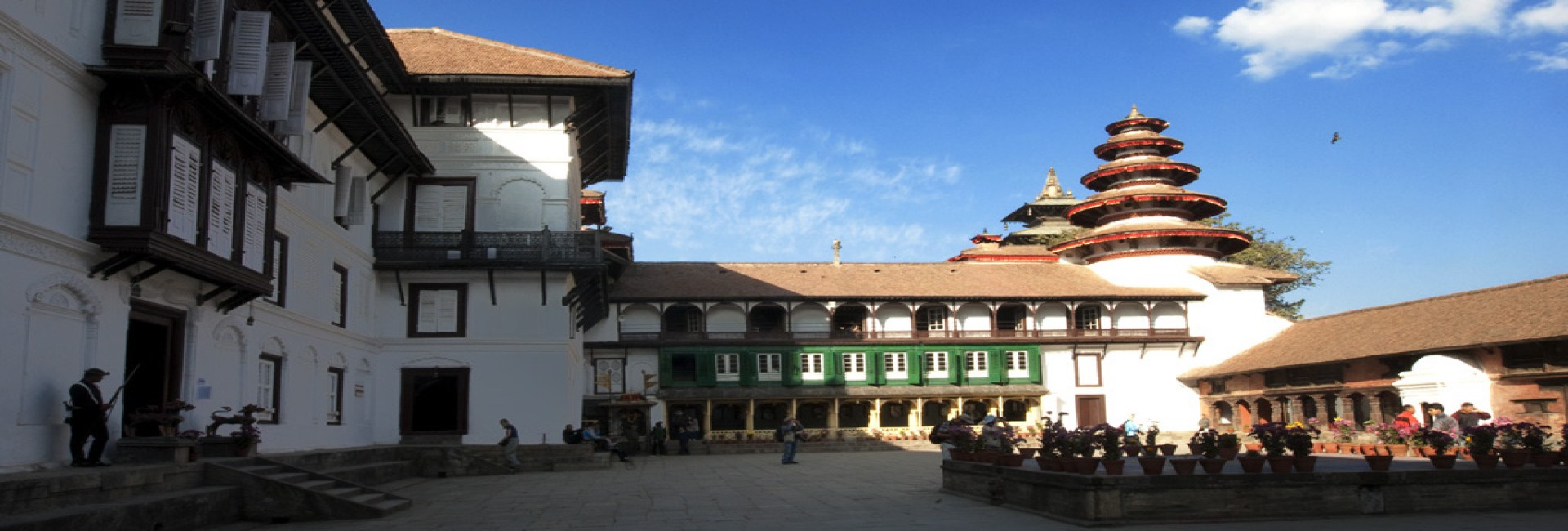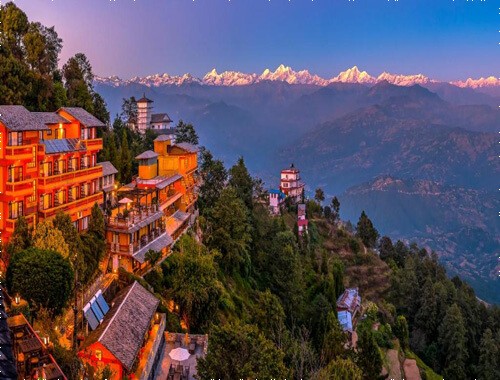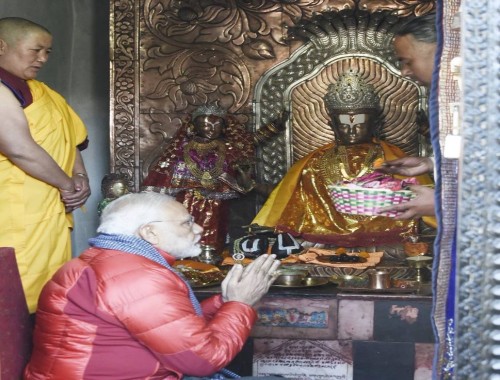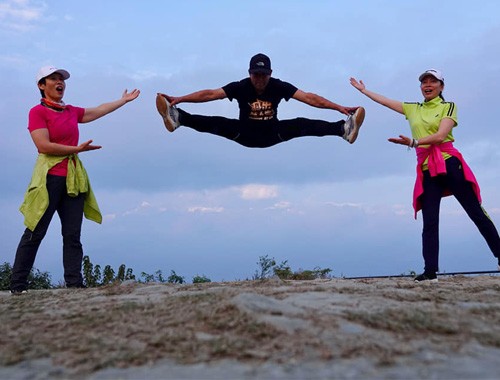Kathmandu is a hive of cultural activity with a nearly non-stop moment on the streets. In Kathmandu, you will explore the UNESCO listed world heritages sites such as Swayambhu Nath Stupa, Boudhanath Stupa, Kathmandu Durbar square, Patan Durbar Square, Bhaktapur Durbar Square , Changu Narayan Temple and Pashupatinath Temple. With this tour you will experience busy markets, rich historical and cultural heritages, traditional alleyways, beautiful temples and stupas, people and lifestyles.
Kathmandu Heritage Tour
- Duration5 Days
- Trip GradeEasy
- Maximum Altitude2100
- Best Season12 Months
- Trip styleTour
- Start/EndKathmandu
About Kathmandu Heritage Tour
Itinerary
Welcome to Kathmandu, the capital of Nepal, rich in culture and religion. After arriving at Kathmandu Tribhuvan International Airport, you will be greeted by our enthusiastic guide with a very smiling face, then be transferred to check in your hotel in downtown by an air-conditioned private vehicle. The rest of today is your free time to take rest or walk around.
In the evening, you will be treated a "Welcome Dinner" at an excellent traditional Nepalese Restaurant where you will enjoy authentic Nepalese food
Kathmandu Durbar squire
this morning you will visit Kathmandu durbar squire Protected as a UNESCO World Heritage Site, Durbar Square is the religious and social heart of Kathmandu's old city and is a complex of palaces, temples, shrines, statues and courtyards built between the 12th and 18th centuries by the ancient kings of Nepal. The square is a queer assortment of the old and the new - elaborately carved architectural features and curving roofs.
Swayambhunath
Next You will visit swyambhunath stupa The most ancient and enigmatic of all the Valley's holy shrines lies 2 km west of Kathmandu city, across the Vishnumati River. The golden spire of Swayambhunath stupa crowns a wooded hillock and offers a commanding view of Kathmandu city. On clear days, one can even view a line of Himalayan peaks. The view is splendid at dusk as city lights flicker one by one and even better when a full moon hangs in the sky.
Patan Durbar Square
At last you will drive to patan and visit Patan Durbar Square, situated in the heart of the city, is the main tourist attraction. The square is full of ancient palaces, temples, and shrines noted for their exquisite carvings. One can rummage for treasures and souvenirs in the various shops around the square. The main attractions of the Patan Durbar Square are the ancient Royal palace itself. It consists of three main chowk, or courtyards; the central Mul Chowk, Sundari Chowk and Main Keshab Narayan Chowk.
Bhaktapur Durbar squire
This morning, you will travel about 18 km, taking about 1hour, to reach Bhaktapur (Bhadgaun), also known as An Open Museum. Stepping into Bhaktapur Durbar Square (World Heritage), you will be transported to a bygone era of Malla Dynasty grandeur. It served as the seat of the Malla kings from the 12th to 15th centuries and was the capital of the Greater Malla Kingdom until the 15th century. The square is an assembly of grandiose palaces, courtyards, and temples. Among these, the 55 Window Palace is particularly notable for its intricate wooden carvings and the elaborate balcony that gives the palace its name. The Golden Gate, which serves as the entrance to the main courtyard of the palace, is an exemplary work of repoussé artistry, adorned with figures of deities and mythical creatures. The Nyatapola Temple, which towers above the square with its five-story structure, is the tallest temple in Nepal. Nearby, the Vatsala Temple, with its distinctive stone construction and the famous "bell of barking dogs," adds to the square's spiritual ambiance. Enjoy leisurely walks in this living museum, where festivals, rituals, and daily activities continue to reflect the traditions of the Newar people. Bhaktapur is also famous for its pottery, and if time permits, you can visit Pottery Square to see pots being thrown, dried in the sun, and fired.
Changu Narayan Temple
Next, drive to visit another World Heritage site called Changu Narayan Temple (7km, 0.5h). Dedicated to Lord Vishnu, this temple is revered as the oldest in Nepal, with origins dating back to the early 4th century. Architecturally, this temple is a masterpiece of Nepalese temple design, showcasing the two-tiered Pagoda style. The temple complex is adorned with intricately carved wood, metal, and stone artworks that depict various deities, as well as scenes from Hindu epics like the Mahabharata and Ramayana. While wandering in the temple, you can read more about Hindu mythology and marvel at the skill of ancient Nepalese artisans and their artworks from the 5th to the 12th century. The hilltop location offers breathtaking views of the Kathmandu Valley.
Pashupatinath temple
Then, head back toward Kathmandu (20km, 1h) and pay a visit to Pashupatinath Temple (World Heritage) - a stunning pagoda-style Hindu temple dedicated to Lord Shiva. As the oldest Hindu temple in Nepal, dating back to around 400 B.C., the main temple complex located at the Bagmati River is only open to Hindus. However, non-Hindus can observe the temple from the terraces on the east side of the river. Pashupatinath is often regarded as the Nepali equivalent of Varanasi in India. Originating in the Himalayan Mountains, the Bagmati River is believed to possess purifying qualities for the soul and holds immense sacred significance for both Hindus and Buddhists. Along the banks, there are platforms dedicated to cremation rites. For generations, families have brought the bodies of their loved ones who have passed away to the river, washing their feet and sprinkling drops of water on their faces. It is believed that the river washes away a person's sins and facilitates their journey to heaven. The bodies are then cremated along the riverbanks, and the ashes are scattered into the water. From across the river, you will notice numerous hermit caves to the north of the cremation platforms. For centuries, hermits and ascetics have been meditating in these caves, and this practice continues to this day. Slow down in NEPAL, the place well-known as Never Ending Peace And Love.
Boudhanath Stupa
At last, you will head to Bodhnath which is a focal point for Tibetan Buddhism in Nepal and home to Boudhanath Stupa (one of the largest Buddhist stupas in the world). You can join the Tibetan pilgrims, and walk around the Boudhanath Stupa (World Heritage) clockwise, turning the prayer wheels under the protective gaze of Buddha's eyes. This is a way to show respect for the Buddha and to accumulate merit. The Boudhanath Stupa is 36 meters tall and 108 meters in diameter, designed as a mandala to represent the Buddhist cosmos. The structure is dominated by a massive dome, at the top of which sits a square tower adorned with the omnipresent eyes of Buddha, gazing serenely in the four cardinal directions. These eyes symbolize the omniscience of Buddha, offering protection and wisdom to all who seek refuge. Surrounding the stupa, prayer flags flutter in the wind, carrying mantras and prayers for peace, compassion, strength, and wisdom far and wide. In the evening, thousands of butter lamps illuminate the plaza surrounding the stupa. Equally fascinating are the surrounding streets, lined with Tibetan monasteries and shops selling religious art, Tibetan handicrafts, and traditional Nepali items.
Stay overnight in Kathmandu.
Breakfast and transfer to Tribhuwan International Airport for final Departure.
Client Reviews
Great experience
We got sick just at the beginning of our trip but whole travel agency took very good care of us, asking if we needed anything and offering help if we need it. Our guide got us medicine and tipped us a local hot beverage to try.
The guide was also very knowledgeable.![Henna H]() Henna HFinlandDate of experience: December 12 2025
Henna HFinlandDate of experience: December 12 2025




